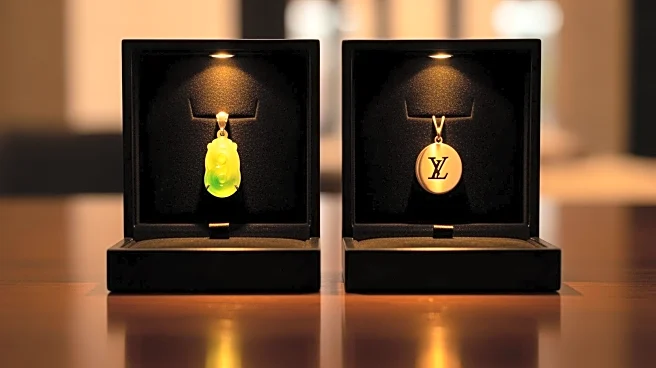What's Happening?
Chinese consumers are increasingly choosing local luxury brands over traditional European and US labels like LVMH. This shift is driven by a preference for homegrown brands that offer distinctive Eastern
aesthetics and cultural resonance. As China's economy cools, spending on foreign premium brands has stalled, while domestic labels have seen significant growth, particularly in online sales. Brands like Songmont and Laopu Gold are gaining popularity, reflecting a broader trend of cultural pride and tailored consumer experiences. This change is reshaping China's luxury market, challenging global players to adapt.
Why It's Important?
The rise of local luxury brands in China signals a significant shift in consumer preferences, impacting global luxury markets. As Chinese consumers prioritize cultural identity and unique experiences, international brands face increased competition and pressure to innovate. This trend highlights the importance of understanding local markets and adapting strategies to meet evolving consumer demands. The success of domestic brands also reflects broader economic shifts, with implications for global trade and investment in the luxury sector.
What's Next?
Global luxury brands may need to reevaluate their strategies in China, focusing on cultural relevance and local engagement to maintain market share. As domestic brands continue to grow, international companies may explore collaborations or adapt their offerings to align with Chinese consumer preferences. The evolving landscape presents opportunities for innovation and partnership, potentially leading to new business models and market dynamics. The shift towards local luxury could also influence global trends, encouraging brands to embrace cultural diversity and authenticity.
Beyond the Headlines
The preference for local luxury brands reflects deeper cultural and economic changes in China, challenging traditional perceptions of luxury and sophistication. This shift underscores the importance of cultural identity and storytelling in consumer engagement, offering insights into the future of global luxury markets. As Chinese brands expand their influence, they may redefine luxury standards, emphasizing craftsmanship and cultural heritage over established brand names.













